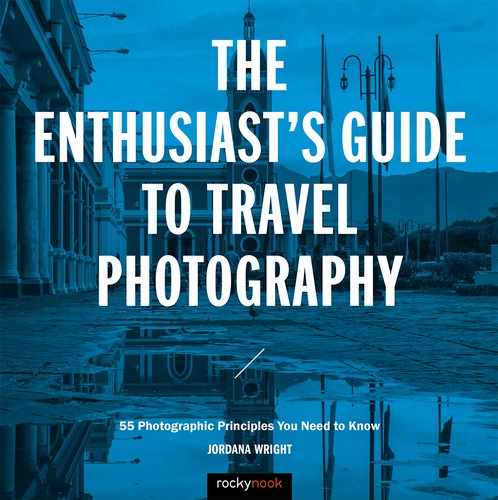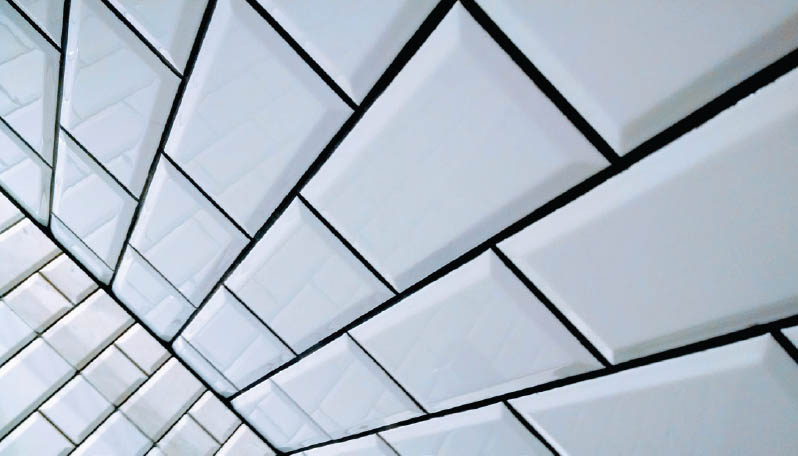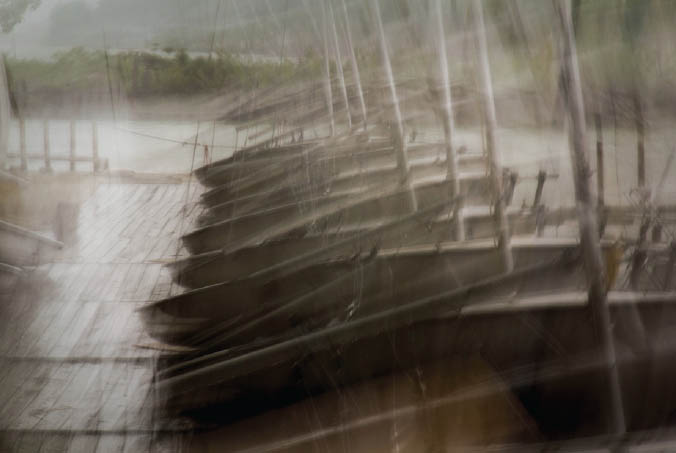32. SEE THE ABSTRACT
![]()
When we travel, so much of our photographic focus lies in providing information to the viewer. We shoot to explain, to draw parallels, and to make the foreign accessible. In abstract photography, we seek the opposite. We shoot to inspire questions, to confound the viewer, to isolate from context. Abstractions help us look past the obvious subject or idea to find beauty and form in the ordinary. Abstractions keep us guessing.
As you travel, you’ll be exposed to an endless collection of new subject material for abstract photography. Anything in the world, from nature to architecture, can be made abstract. Keep your eyes open, and explore the fringes and the negative space for unique juxtaposition, line, shadow, shape, and lighting.
Where to Start?
Abstract photography is one photographic pursuit that relies minimally on gear. Some of my favorite abstract photographs were taken with my phone on a whim when I noticed something unique and interesting (Figures 32.1 and 32.2). You can use any camera and any lens to take abstract photos, but some lenses may work better than others, depending on the size and scope of the photograph you have in mind.
A zoom lens can be helpful to create abstracts of architecture (Figure 32.3) or from nature (Figure 32.4) by zooming in on a compelling shape or form. A longer focal length will allow you to selectively crop to remove the subject’s context or nearby distractions. Similarly, macro lenses can help isolate abstractions when your subject is already quite small (Figure 32.5). You can make practically any lens work. When it comes to seeing the abstract, your vision and creativity are much more important than equipment.
32.1 Hotel lamp, Port Angeles, Washington
Cell phone photo
32.2 Restaurant bathroom tiles, Madrid, Spain
Cell phone photo
32.3 Chicago, Illinois
ISO 100; 1/160 sec.; f/9; 119mm
32.4 Turkey Run State Park, Marshall, Indiana
ISO 250; 1/160 sec.; f/6.3; 210mm
32.5 Barricade reflector, New York, New York
ISO 400; 1/1250 sec.; f/5.6; 85mm
Share Your Best Abstract Photo!
Once you’ve captured your best abstract image, share it with the Enthusiast’s Guide community! Follow @EnthusiastsGuides and post your image to Instagram with the hashtag #EGAbstract. Don’t forget that you can also search that same hashtag to view all the posts and be inspired by what others are shooting.
Varieties of Abstraction
Experimentation is the best way to get comfortable with creating abstracts. When you travel, all the little details that differ from what you’re used to will jump out at you. When something catches your attention, play around with any of these techniques to make compelling abstract photos:
- Abstraction by size or perspective: Make something huge look small, make something tiny seem enormous. If you’re used to looking down at it, try photographing from a bug’s-eye view.
- Abstraction by movement: Play with exposures longer than 1/60 while panning or zooming to capture a little blur (Figure 32.6) or crazy streaks of motion (Figure 32.7). If your shutter speed is fast enough, some subjects may remain identifiable, but things can still seem quite abstract with just a hint of motion.
- Abstraction by isolation: Take something totally out of its context. Use the edges of your frame or your depth of field to limit the viewer’s insights. This works well with architecture or other man-made objects (Figure 32.8).
32.6 Scarsdale, New York
ISO 320; 1/6 sec.; f/5.6; 85mm
32.7 Wilmette, Illinois
ISO 100; 0.6 sec.; f/22; 85mm
32.8 A portion of a statue on a bookcase, Norfolk, Virginia
ISO 800; 1/500 sec.; f/8; 170mm
32.9 Chicago, Illinois
ISO 400; 1/6400 sec.; f/5.6; 47mm
- Abstraction by reflection: Reflective surfaces can beautifully distort the normal into the unique and interesting (Figure 32.9). Try photographing reflections on smooth surfaces like glass, or curved or irregular surfaces like moving water, to give ordinary objects a new shape. Objects that are unique to your location can provide ideal foreign feeling subjects or reflective surfaces. If you really want to get creative, photograph through a window to capture the reflection and the scene inside for interesting double-exposure-ish abstracts (Figure 32.10).
- Abstraction by blur: A soft focus or a totally out-of-focus shot can blur subject edges to abstraction. This works well with human or animal subjects (Figure 32.11), familiar objects and silhouettes, or points of light (Figure 32.12).
Just Have Fun
Abstracts are a photographic free-for-all. Ignore any rules you’ve been told and go ahead and experiment. Abstracts can be blurry, abstracts can be out of focus, and abstracts can overrule reality and decide what’s up or down. When you get the idea that something might make a good abstract, try new techniques, however silly they may seem, to find a new way of looking at the world around you.
32.10 New Orleans, Louisiana
ISO 100; 1/30 sec.; f/5.6; 85mm
32.11 Indianapolis, Indiana
ISO 100; 1/250 sec.; f/1.8; 50mm
32.12 Chicago, Illinois
ISO 160; 13 sec.; f/11; 190mm












